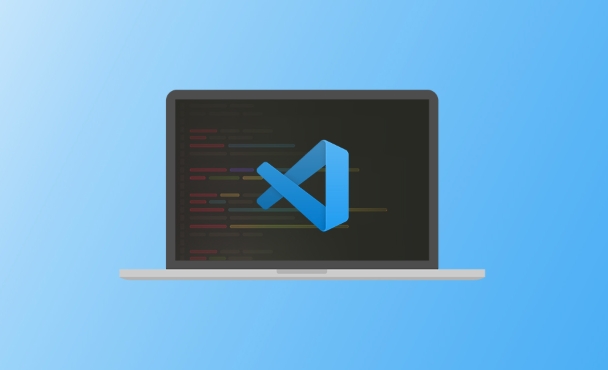How to use VS Code for Python development
Sep 22, 2025 am 03:26 AMInstall Python and VS Code, then add the Microsoft Python extension for full functionality. 2. Set up a virtual environment using python -m venv venv, activate it based on your OS, and select the interpreter via Ctrl Shift P to ensure correct environment usage. 3. Create a .py file, write code like print("Hello from VS Code!"), and run it using the right-click option, the play button, or the integrated terminal with python app.py. 4. Enable linting by installing tools like pylint and configuring them in Settings to receive real-time code quality feedback. 5. Debug code by setting breakpoints, pressing F5 to launch the debugger, allowing creation of launch.json, and using debug controls to inspect variables and execution flow. 6. Use Jupyter Notebooks by installing Jupyter, opening or creating .ipynb files, and running cells with Shift Enter for interactive computing. 7. Customize your workspace by setting up code formatting with black, enabling auto-save, choosing a theme and font, and optionally using a local settings.json file for project-specific configurations, resulting in a powerful, adaptable Python development environment.

Using Visual Studio Code (VS Code) for Python development is a popular choice because of its lightweight design, strong extension ecosystem, and excellent debugging tools. Here’s a practical guide to get you up and running efficiently.

1. Install Python and VS Code
First, make sure you have both Python and VS Code installed:
-
Python: Download from python.org and ensure it's added to your system PATH. Verify installation by running
python --versionorpython3 --versionin your terminal. - VS Code: Download and install from the official site.
After installation, open VS Code and install the official Python extension by Microsoft (search for "Python" in the Extensions marketplace). This adds support for IntelliSense, linting, debugging, code navigation, and more.

2. Set Up Your Python Environment
VS Code supports virtual environments, which help manage dependencies per project.
- Create a project folder and open it in VS Code.
- In the terminal (inside VS Code), set up a virtual environment:
python -m venv venv
- Activate it:
- On Windows:
venv\Scripts\activate
- On macOS/Linux:
source venv/bin/activate
- On Windows:
- Once activated, select the interpreter: press
Ctrl Shift P, type "Python: Select Interpreter", and choose the one inside yourvenvfolder (e.g.,./venv/bin/python).
You’ll know it’s working when you see the environment name in the bottom-left of the status bar.

3. Write and Run Python Code
- Create a
.pyfile (e.g.,app.py). - Write some code:
print("Hello from VS Code!") - Run it by right-clicking the file and selecting "Run Python File in Terminal", or use the play button in the top-right corner (if the Python extension is active).
For more control, use the integrated terminal (`Ctrl ``) and run:
python app.py
4. Use IntelliSense and Linting
The Python extension provides smart code completion, parameter info, and error detection.
- Install a linter like
pylintorflake8:pip install pylint
- VS Code will prompt you to enable linting. Go to Settings (
Ctrl ,) and search for "Python Linting" to enable and select your preferred linter.
You’ll get real-time feedback on code quality and potential bugs.
5. Debug Your Code
VS Code has a powerful debugger.
- Set a breakpoint by clicking to the left of a line number (a red dot will appear).
- Press
F5to start debugging. - The first time, you’ll be prompted to create a
launch.jsonfile under.vscode/. Choose "Python File" as the configuration. - Debug controls (pause, step over, step into, etc.) appear at the top, and variables and call stack show in the sidebar.
You can inspect variables, evaluate expressions, and step through your code line by line.
6. Use Jupyter Notebooks (Optional)
VS Code supports .ipynb files natively.
- Install Jupyter:
pip install jupyter - Open a
.ipynbfile or create one. - You can run cells with
Shift Enter, just like in Jupyter Notebook.
This is great for data analysis or prototyping.
7. Customize Your Workspace
- Formatting: Use
blackorautopep8. Install via pip and configure in settings:"python.formatting.provider": "black"
-
Auto-save: Enable in
File > Auto Save. - Theme and Font: Pick a comfortable theme (e.g., "Dark ", "Solarized") and adjust font size in Settings.
You can also create a settings.json file in your project’s .vscode folder to keep configurations local.
Basically, with the right setup, VS Code becomes a powerful, flexible environment for Python—whether you're writing scripts, building web apps, or doing data science. The key is installing the right extensions and using virtual environments to keep things clean.
The above is the detailed content of How to use VS Code for Python development. For more information, please follow other related articles on the PHP Chinese website!

Hot AI Tools

Undress AI Tool
Undress images for free

Undresser.AI Undress
AI-powered app for creating realistic nude photos

AI Clothes Remover
Online AI tool for removing clothes from photos.

ArtGPT
AI image generator for creative art from text prompts.

Stock Market GPT
AI powered investment research for smarter decisions

Hot Article

Hot Tools

Notepad++7.3.1
Easy-to-use and free code editor

SublimeText3 Chinese version
Chinese version, very easy to use

Zend Studio 13.0.1
Powerful PHP integrated development environment

Dreamweaver CS6
Visual web development tools

SublimeText3 Mac version
God-level code editing software (SublimeText3)
 How to install packages from a requirements.txt file in Python
Sep 18, 2025 am 04:24 AM
How to install packages from a requirements.txt file in Python
Sep 18, 2025 am 04:24 AM
Run pipinstall-rrequirements.txt to install the dependency package. It is recommended to create and activate the virtual environment first to avoid conflicts, ensure that the file path is correct and that the pip has been updated, and use options such as --no-deps or --user to adjust the installation behavior if necessary.
 How to test Python code with pytest
Sep 20, 2025 am 12:35 AM
How to test Python code with pytest
Sep 20, 2025 am 12:35 AM
Python is a simple and powerful testing tool in Python. After installation, test files are automatically discovered according to naming rules. Write a function starting with test_ for assertion testing, use @pytest.fixture to create reusable test data, verify exceptions through pytest.raises, supports running specified tests and multiple command line options, and improves testing efficiency.
 What is BIP? Why are they so important to the future of Bitcoin?
Sep 24, 2025 pm 01:51 PM
What is BIP? Why are they so important to the future of Bitcoin?
Sep 24, 2025 pm 01:51 PM
Table of Contents What is Bitcoin Improvement Proposal (BIP)? Why is BIP so important? How does the historical BIP process work for Bitcoin Improvement Proposal (BIP)? What is a BIP type signal and how does a miner send it? Taproot and Cons of Quick Trial of BIP Conclusion?Any improvements to Bitcoin have been made since 2011 through a system called Bitcoin Improvement Proposal or “BIP.” Bitcoin Improvement Proposal (BIP) provides guidelines for how Bitcoin can develop in general, there are three possible types of BIP, two of which are related to the technological changes in Bitcoin each BIP starts with informal discussions among Bitcoin developers who can gather anywhere, including Twi
 How to handle command line arguments in Python
Sep 21, 2025 am 03:49 AM
How to handle command line arguments in Python
Sep 21, 2025 am 03:49 AM
Theargparsemoduleistherecommendedwaytohandlecommand-lineargumentsinPython,providingrobustparsing,typevalidation,helpmessages,anderrorhandling;usesys.argvforsimplecasesrequiringminimalsetup.
 How to debug Node.js applications in VS Code
Sep 20, 2025 am 04:04 AM
How to debug Node.js applications in VS Code
Sep 20, 2025 am 04:04 AM
Configure launch.json file to set up the debugging environment to ensure that the program field points to the main entrance file; 2. Use launch mode to directly start the script and pass in args and env parameters; 3. Use attach mode to connect to running processes that have been started through node--inspect; 4. When debugging npm scripts, set runtimeExecutable to npm and enable integratedTerminal; 5. Improve debugging efficiency by setting breakpoints, conditional breakpoints, variable checking, expression evaluation and enabling AutoAttach; 6. If you encounter problems, check the path, startup parameters, port matching, sourceMaps configuration and restart the debugging
 How to install VS Code on Linux
Sep 16, 2025 am 09:04 AM
How to install VS Code on Linux
Sep 16, 2025 am 09:04 AM
ToinstallVSCodeonLinux,usetheofficialAPTrepositoryforautomaticupdates,Snapforcross-distributioncompatibility,oramanualtarballforfullcontrol.Choosebasedonyoursystemandneeds.
 How can you create a context manager using the @contextmanager decorator in Python?
Sep 20, 2025 am 04:50 AM
How can you create a context manager using the @contextmanager decorator in Python?
Sep 20, 2025 am 04:50 AM
Import@contextmanagerfromcontextlibanddefineageneratorfunctionthatyieldsexactlyonce,wherecodebeforeyieldactsasenterandcodeafteryield(preferablyinfinally)actsas__exit__.2.Usethefunctioninawithstatement,wheretheyieldedvalueisaccessibleviaas,andthesetup
 How to write automation scripts for daily tasks in Python
Sep 21, 2025 am 04:45 AM
How to write automation scripts for daily tasks in Python
Sep 21, 2025 am 04:45 AM
Identifyrepetitivetasksworthautomating,suchasorganizingfilesorsendingemails,focusingonthosethatoccurfrequentlyandtakesignificanttime.2.UseappropriatePythonlibrarieslikeos,shutil,glob,smtplib,requests,BeautifulSoup,andseleniumforfileoperations,email,w




